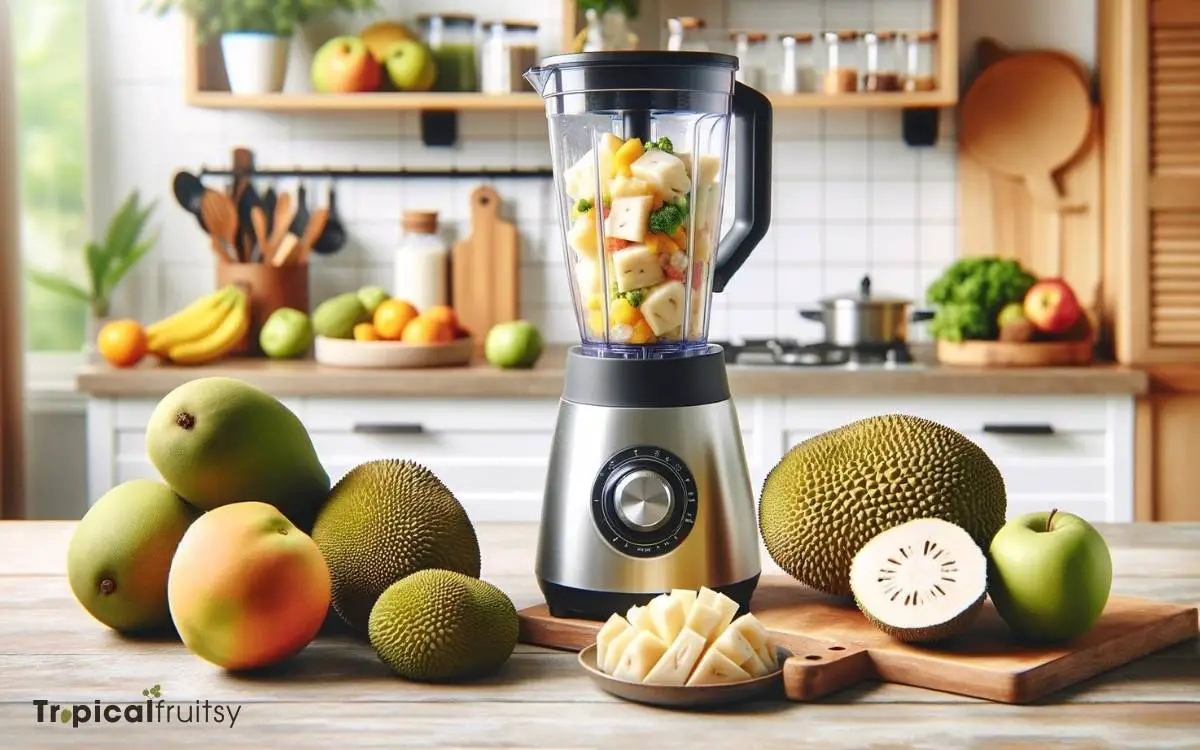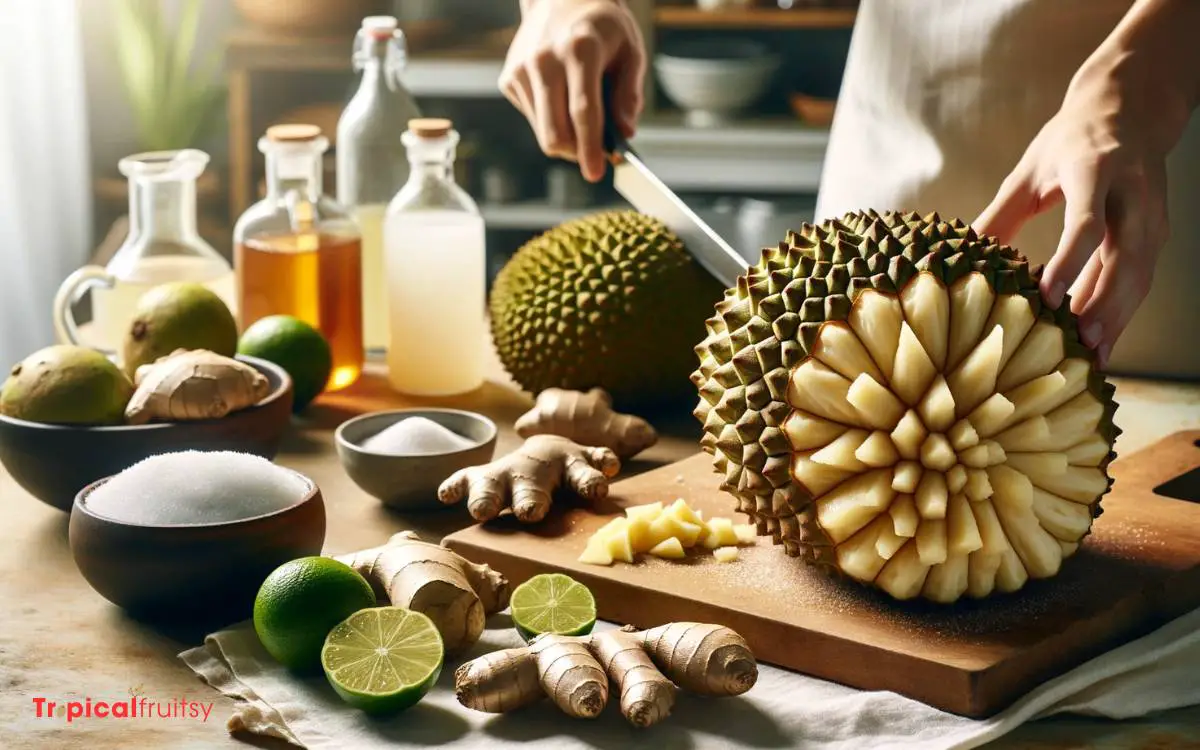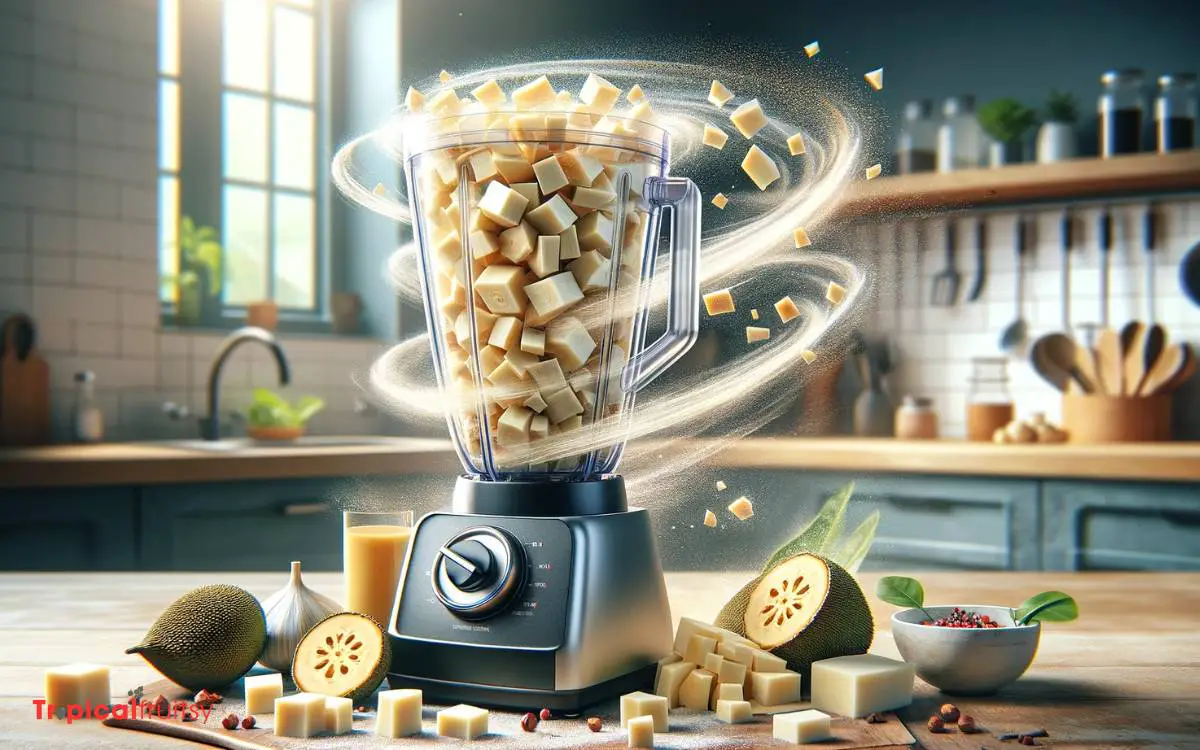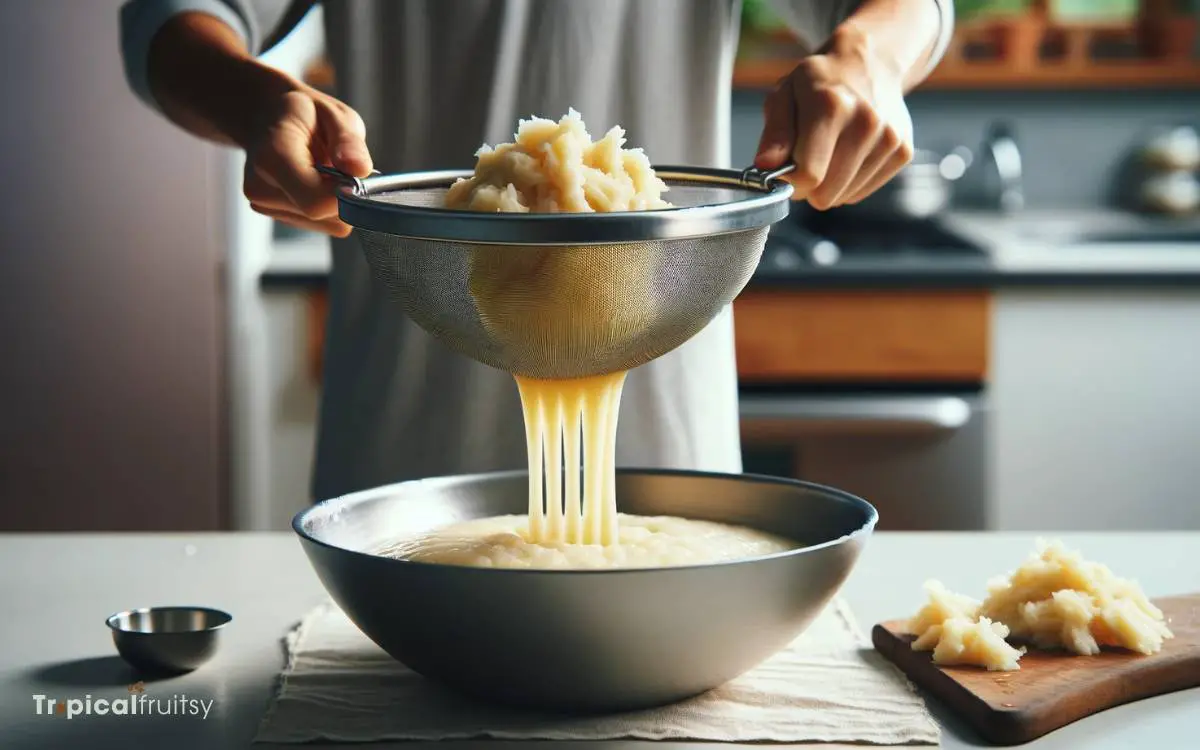How to Make Breadfruit Juice? 5 Easy Steps!
To make breadfruit juice, select a ripe breadfruit and peel and core it thoroughly. Blend the fruit with water and strain the mixture to achieve a smooth texture.
Add sweeteners or other flavors as desired and enjoy this exotic and nourishing drink.
Here are some quick steps:
These steps ensure that the resulting breadfruit juice is delicious and ready to be enjoyed.
Savor the tropical delight of homemade breadfruit juice, a blend of health and flavor in your glass.

Key Takeaway
Step 1: Selecting the Perfect Breadfruit

Before embarking on the preparation of breadfruit juice, it is crucial to select a ripe, blemish-free breadfruit for the best flavor and texture.
A ripe breadfruit is characterized by a slightly soft touch, with a green to yellow-brown skin and a noticeable sweet, fragrant aroma, indicating the presence of mature sugars and a peak of enzymatic activity that will contribute to the depth of flavor.
The absence of blemishes ensures the integrity of the fruit’s flesh and prevents the inclusion of unwanted bitter compounds in the juice.
Nutritionally, ripe breadfruit is a rich source of dietary fiber, vitamin C, potassium, and complex carbohydrates, making it an ideal candidate for a healthful beverage. Analytical selection is paramount to harness these benefits in juice form.
Step 2: Preparing Your Ingredients

Having selected a ripe breadfruit, gather all necessary ingredients and utensils to commence the juice-making process.
The maturity of the breadfruit is pivotal; it should exude a fragrant aroma and yield slightly under pressure, indicating a high presence of natural sugars, essential for a rich, sweet flavor profile in the juice.
Ensure the integrity of each ingredient to maximize the nutritional benefits.
Consider the following components:
- Fresh, cold water to help extract the juice and maintain hydration
- Natural sweeteners such as honey or agave, if preferred, to enhance sweetness
- A squeeze of lemon or lime for a touch of acidity and vitamin C boost
- Ice cubes for serving, to preserve the freshness and coolness
Each element should be prepared and measured with precision to ensure a balanced, healthful beverage.
Step 3: Blending Process Explained

The blending procedure entails combining the prepared breadfruit with water and optional sweeteners in a high-powered mixer to achieve a smooth, homogenous liquid.
This process is crucial for extracting the full nutritional profile of the fruit, including its high fiber content, which aids in digestion, and its rich array of vitamins and minerals such as vitamin C, potassium, and calcium.
The breadfruit’s starchy composition necessitates thorough blending to break down the fibrous cells and integrate them seamlessly into the juice, ensuring maximum bioavailability of nutrients.
The addition of water is not merely a diluent; it aids in the dispersion of the fruit’s inherent flavors and the dissolution of any added nutritive sweeteners, resulting in a well-balanced, nutritious beverage.
Step 4: Straining for Smoothness

Straining the blended mixture through a fine mesh sieve or cheesecloth is essential to remove any remaining fibrous particles and achieve a silky-smooth breadfruit juice.
The straining process not only ensures a refined texture but also enhances the overall palatability and digestibility of the beverage.
To facilitate an optimal straining experience:
- Ensure the sieve or cheesecloth is clean and free from any residues that may alter the juice’s flavor.
- Apply gentle pressure to the pulp to extract maximum liquid while minimizing waste.
- Discard the solids collected in the sieve to maintain the juice’s consistency.
- Repeat the straining process if necessary to attain the desired smoothness.
This meticulous approach underscores the importance of texture in liquid nutrition. With the straining complete, the focus can now shift to the art of presenting this tropical delight—serving suggestions.
Can Breadfruit Leaf Tea be used as an alternative to Breadfruit Juice?
Yes, an easy breadfruit leaf tea recipe can be used as an alternative to breadfruit juice. Simply boil breadfruit leaves in water, let it steep, and enjoy a refreshing and healthy drink. This tea provides all the benefits of breadfruit without the sweetness of the juice.
Step 5: Serving Suggestions

One may elevate the enjoyment of breadfruit juice by exploring various serving options that cater to individual preferences and occasions.
When considering the nutritional profile, breadfruit juice is an excellent source of vitamin C and dietary fiber, which can be optimized by pairing with a protein-rich snack or meal to balance macronutrient intake.
For a refreshing summer beverage, serve the juice chilled over ice, possibly garnished with a sprig of mint for an aromatic twist.
For those seeking a warming experience, breadfruit juice can be gently heated with spices such as cinnamon or clove, offering a comforting alternative to traditional hot drinks.
Additionally, its subtle sweetness and creamy texture make it an ideal base for smoothies or cocktail mixers, providing versatility in both casual and formal settings.
Conclusion
The alchemy of transforming breadfruit into a delectable juice is a testament to culinary innovation.
By meticulously selecting ripe breadfruit, preparing the components with precision, employing a thorough blending process, and diligently straining to achieve silkiness, one can craft a beverage that is not only refreshing but also nutritionally beneficial.
This libation stands as a harmonious blend of tradition and nourishment, a veritable nectar that captures the essence of tropical sustenance.






